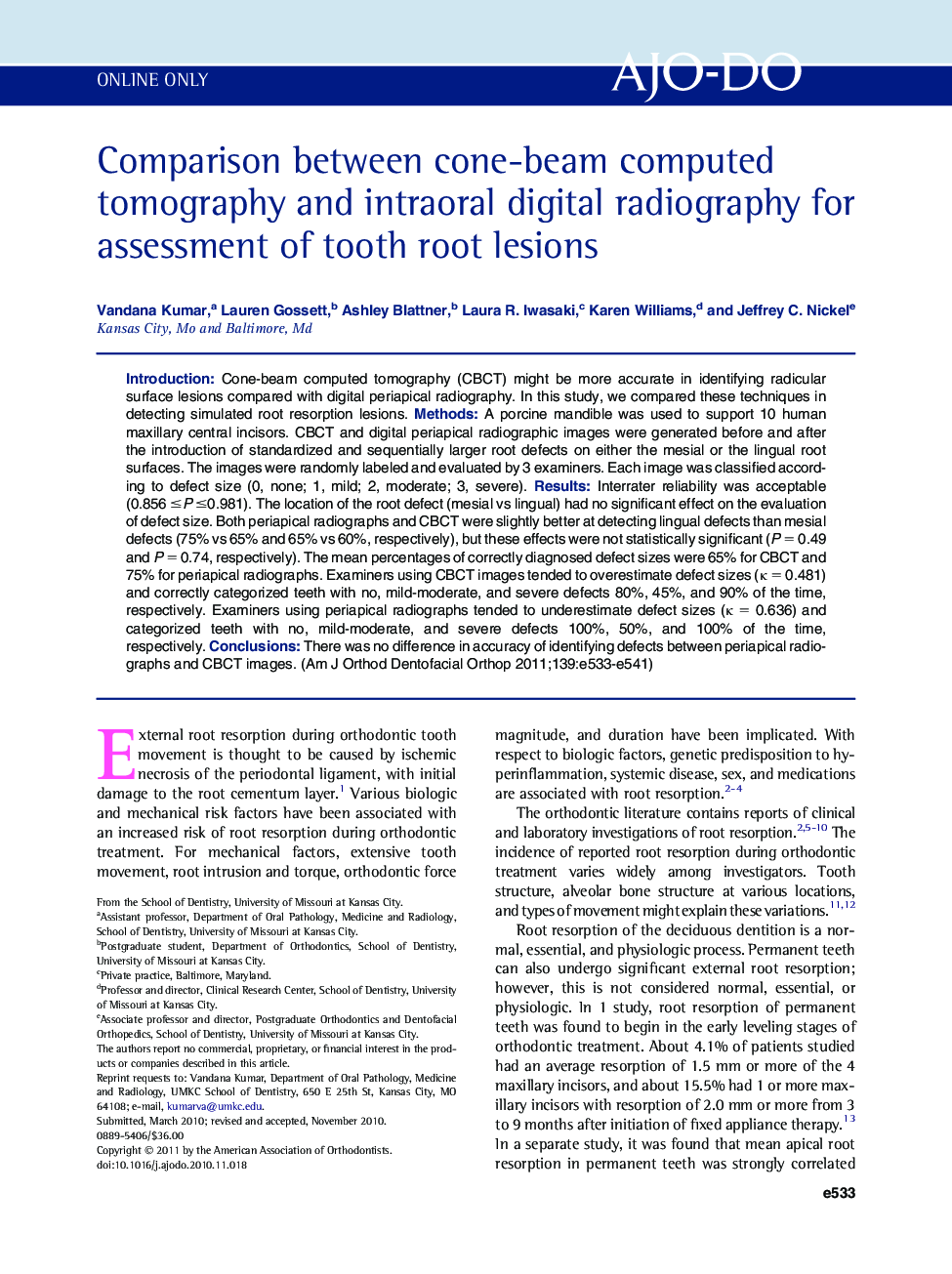| Article ID | Journal | Published Year | Pages | File Type |
|---|---|---|---|---|
| 3117239 | American Journal of Orthodontics and Dentofacial Orthopedics | 2011 | 9 Pages |
IntroductionCone-beam computed tomography (CBCT) might be more accurate in identifying radicular surface lesions compared with digital periapical radiography. In this study, we compared these techniques in detecting simulated root resorption lesions.MethodsA porcine mandible was used to support 10 human maxillary central incisors. CBCT and digital periapical radiographic images were generated before and after the introduction of standardized and sequentially larger root defects on either the mesial or the lingual root surfaces. The images were randomly labeled and evaluated by 3 examiners. Each image was classified according to defect size (0, none; 1, mild; 2, moderate; 3, severe).ResultsInterrater reliability was acceptable (0.856 ≤P ≤0.981). The location of the root defect (mesial vs lingual) had no significant effect on the evaluation of defect size. Both periapical radiographs and CBCT were slightly better at detecting lingual defects than mesial defects (75% vs 65% and 65% vs 60%, respectively), but these effects were not statistically significant (P = 0.49 and P = 0.74, respectively). The mean percentages of correctly diagnosed defect sizes were 65% for CBCT and 75% for periapical radiographs. Examiners using CBCT images tended to overestimate defect sizes (κ = 0.481) and correctly categorized teeth with no, mild-moderate, and severe defects 80%, 45%, and 90% of the time, respectively. Examiners using periapical radiographs tended to underestimate defect sizes (κ = 0.636) and categorized teeth with no, mild-moderate, and severe defects 100%, 50%, and 100% of the time, respectively.ConclusionsThere was no difference in accuracy of identifying defects between periapical radiographs and CBCT images.
